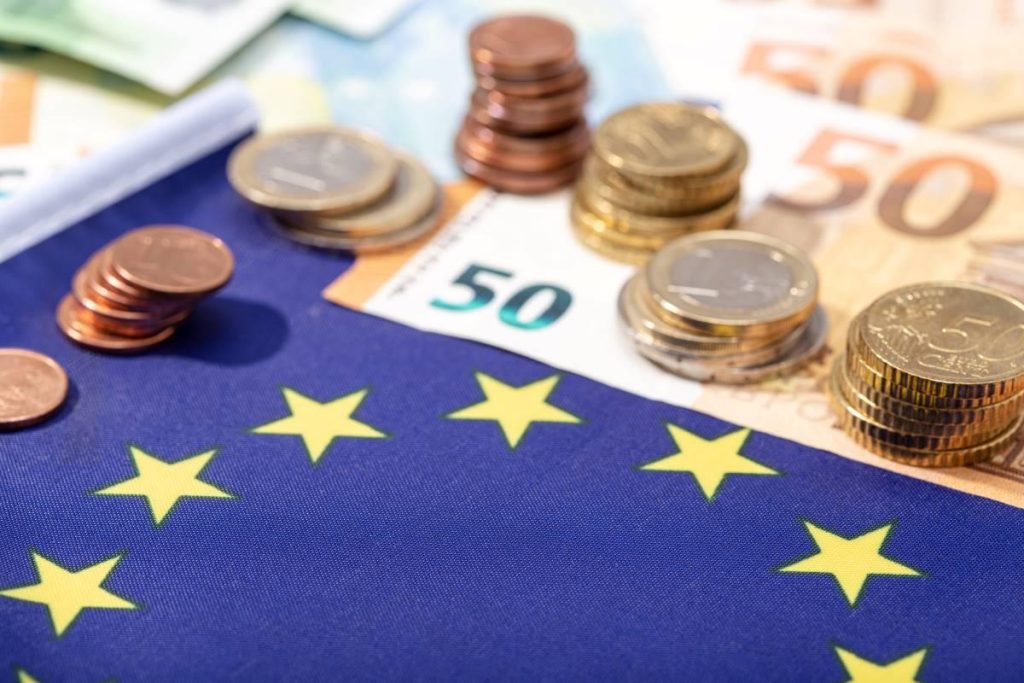Europe’s economic recovery following the challenges posed by the COVID-19 pandemic has been remarkable, driven by a mix of government stimulus packages, the gradual reopening of economies, and the successful rollout of vaccination programs. However, as the region enters a new phase of post-pandemic recovery, questions remain about the sustainability of this momentum. Will Europe’s recovery remain steady, or will it face challenges that could derail long-term growth? Which sectors are likely to lead the charge and drive economic expansion in the coming years?
This article explores the current state of Europe’s economic recovery, examines the factors that could affect its sustainability, and highlights the key sectors poised to lead growth in the near future.
1. Europe’s Economic Recovery: A Snapshot
The economic recovery in Europe has been impressive but uneven. According to the European Commission’s forecasts, the European Union (EU) GDP is expected to grow steadily in the short term, with varying growth rates across member states. Some countries, particularly those that were severely impacted by lockdowns and restrictions, have experienced a faster recovery. Others, particularly in Southern Europe, face more long-term challenges, including high unemployment and slower vaccination rates.
Several factors have contributed to Europe’s rebound:
- Government Stimulus Programs: The EU’s NextGenerationEU recovery plan, worth €750 billion, has played a significant role in supporting economic recovery across the continent. These funds have been allocated for public investment in green energy, digital infrastructure, and other key sectors, helping to stimulate growth and job creation.
- Resilient Labor Markets: While unemployment spiked during the pandemic, European countries have managed to maintain a relatively strong labor market, especially with targeted support programs such as furlough schemes in the UK, France, and Germany, which helped keep workers employed.
- Global Trade Recovery: Europe has also benefited from the global recovery in trade, particularly in sectors such as manufacturing, automotive, and pharmaceuticals. As demand for goods has surged, Europe’s export-driven economies have been able to rebound.
- Vaccination Rollouts and Consumer Confidence: The swift rollouts of vaccines, especially in Western and Northern Europe, have bolstered consumer confidence and allowed the reopening of key sectors such as hospitality, travel, and retail.
2. Challenges to Sustaining the Recovery Momentum
Despite the optimism surrounding Europe’s economic recovery, several key challenges could potentially derail the growth trajectory. These include:
2.1. Supply Chain Disruptions and Inflation
Europe, like much of the world, is experiencing disruptions in global supply chains, particularly in manufacturing sectors. Shortages of key raw materials such as semiconductors, energy price hikes, and labor shortages are putting upward pressure on prices and threatening to constrain production.
Inflation has risen in several European countries, driven in part by rising energy prices, logistical bottlenecks, and pent-up demand. If inflation remains persistently high, it could lead to tighter monetary policies, higher interest rates, and reduced consumer spending, which may undermine recovery efforts.
2.2. Debt and Fiscal Constraints
While government spending in response to the pandemic was crucial in supporting economies, it has resulted in a significant increase in public debt across Europe. Countries like Italy and Spain, which were already burdened by high debt levels, face challenges in managing their fiscal policies and meeting debt obligations while continuing to fund recovery initiatives.
The EU’s fiscal rules, which limit budget deficits, could also pose constraints as countries seek to balance recovery efforts with long-term fiscal stability. This issue is particularly pertinent for Southern European countries, where structural deficits and high unemployment rates remain a concern.
2.3. Labor Market Transformation and Skills Gap
As economies recover, there is a growing mismatch between the skills workers possess and the skills that are in demand. The pandemic has accelerated digitalization and automation in many sectors, and workers need to upskill and reskill to keep pace with these changes. There is a need for a concerted effort to address skills gaps and prepare the workforce for the demands of a post-pandemic economy.
Additionally, some industries, such as hospitality and tourism, face labor shortages as workers seek more stable, higher-paying jobs in other sectors. This transformation of the labor market may pose challenges in maintaining employment levels and ensuring that recovery benefits are broadly shared.
2.4. Geopolitical and Environmental Risks
Europe also faces external risks such as geopolitical tensions, including those related to Brexit and relations with Russia, and internal environmental pressures like the increasing frequency of extreme weather events, which may disrupt agriculture and infrastructure. The EU’s commitment to climate change goals under the European Green Deal presents both an opportunity for growth and a potential source of disruption, as industries transition to greener practices.

3. Key Sectors Leading Europe’s Post-Pandemic Growth
While Europe’s overall recovery faces challenges, certain sectors are particularly well-positioned to drive growth in the coming years. These sectors will play a critical role in shaping the continent’s economic future.
3.1. Technology and Digital Transformation
The digital transformation has been one of the most prominent trends accelerated by the pandemic, and Europe’s technology sector is poised to continue driving growth. From cloud computing and cybersecurity to artificial intelligence (AI) and the Internet of Things (IoT), technology will be a key growth driver in Europe.
Countries like Germany, France, and Estonia are already leading the way in digital innovation, with strong ecosystems for tech startups and a focus on digitalization across industries such as manufacturing, healthcare, and finance. The EU’s Digital Strategy, which aims to make Europe a global leader in digital technology by 2030, will play a crucial role in boosting investments in these areas.
3.2. Green Energy and Sustainability
Europe has long been a global leader in renewable energy, and the transition to a green economy is accelerating as part of the EU’s Green Deal. The European Union aims to achieve carbon neutrality by 2050, which will require massive investments in clean energy, electric vehicles (EVs), green hydrogen, and energy-efficient infrastructure.
The green energy transition will create significant opportunities in sectors such as solar and wind energy, energy storage, and electric mobility. Governments are providing incentives for companies to invest in clean technologies, while consumers are increasingly adopting sustainable practices. This shift toward a green economy is expected to create jobs and stimulate economic growth in the coming years.
3.3. Healthcare and Biotechnology
The healthcare and biotechnology sectors have experienced rapid growth during the pandemic, and this momentum is expected to continue. Europe is home to some of the world’s leading pharmaceutical companies, and the pandemic has highlighted the importance of innovation in health tech, vaccines, diagnostics, and digital health solutions.
As the population ages and chronic diseases rise, healthcare demand will increase across Europe. Innovations such as telemedicine, AI-powered diagnostics, and personalized medicine will continue to drive the healthcare sector forward. Additionally, the ongoing investments in biotechnology will continue to enhance Europe’s position in global pharmaceutical research and development.
3.4. Financial Services and Fintech
The financial services sector, particularly fintech, has experienced rapid growth in Europe in recent years. The European Union has created a favorable regulatory environment for fintech startups, including initiatives like the European Payments Initiative (EPI) and the implementation of open banking regulations. These developments are reshaping the financial services industry, with digital payments, mobile banking, peer-to-peer lending, and blockchain technology becoming more prevalent.
London, Berlin, and Amsterdam are key fintech hubs in Europe, attracting investments and talent from around the world. As digital banking and financial inclusion continue to grow, the sector is expected to remain a key driver of growth, especially in countries with large unbanked populations or underdeveloped banking infrastructure.
3.5. Manufacturing and Automation
Manufacturing is a cornerstone of Europe’s economy, particularly in countries like Germany, Italy, and Poland. The sector is undergoing a transformation driven by the adoption of automation, robotics, and digital technologies. Industry 4.0 is revolutionizing manufacturing, making it more efficient, flexible, and sustainable.
The EU’s push for digitalization in manufacturing, as well as its focus on reducing carbon emissions in industrial processes, will drive innovation and productivity in the sector. Additionally, Europe’s robust industrial base is well-positioned to capitalize on the growing demand for electric vehicles, renewable energy infrastructure, and green technologies.
3.6. Tourism and Hospitality (Post-Pandemic)
While the tourism and hospitality sectors have been heavily impacted by the pandemic, the gradual return of travel, boosted by widespread vaccination campaigns and eased restrictions, is expected to lead to a strong rebound. Europe is one of the world’s most popular tourist destinations, and the recovery of this sector will provide a significant boost to local economies.
Countries such as Spain, Italy, France, and Greece rely heavily on tourism as a key economic driver. In the post-pandemic era, the sector is likely to evolve with increased focus on sustainable and digital tourism experiences. Innovations such as virtual tourism, contactless check-in, and personalized travel services will reshape the industry and drive growth.
4. Conclusion: Can Europe Sustain Its Recovery?
Europe’s economic recovery has been strong, but the path forward will not be without challenges. Inflation, supply chain disruptions, and fiscal constraints could impede growth, but the continent’s diverse and resilient economy, coupled with its ongoing investment in technology, green energy, and innovation, provides a solid foundation for sustained recovery.
Sectors such as technology, green energy, healthcare, fintech, and manufacturing are expected to be the key drivers of growth in the coming years. By fostering innovation, addressing labor market transformations, and ensuring that recovery benefits are broadly shared, Europe has the potential to lead the world in the next phase of economic expansion.
However, maintaining the momentum of the recovery will require coordinated efforts between governments, businesses, and workers. If Europe can successfully navigate its challenges and capitalize on emerging opportunities, its economic future looks promising.





























